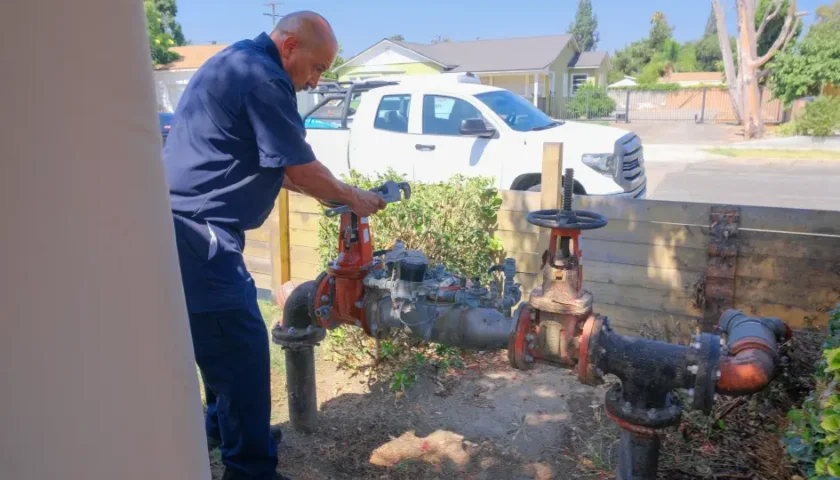Stainless steel 416 is a martensitic grade known for its excellent machinability, corrosion resistance, and high mechanical properties. Due to its versatility and performance, it is commonly used in various industries. This introduction explores the key features, properties, applications, and benefits of using 416 stainless steel bars.
What is 416 Stainless Steel Bar?
416 stainless steel bar is a martensitic grade of stainless steel known for its exceptional machinability, good corrosion resistance, and high strength. Enhanced with sulfur to improve machinability, it is widely used in applications requiring extensive machining, such as automotive engine components, pump shafts, and precision industrial parts. While not as corrosion-resistant as austenitic stainless steels like 304 or 316, 416 offers sufficient resistance for many environments, making it a versatile and cost-effective choice for various industrial and consumer applications.
Manufacturing Process of 416 Stainless Steel Bar
The manufacturing process of 416 stainless steel bars involves several stages, each crucial for achieving the desired mechanical properties, machinability, and corrosion resistance. Here is a detailed overview of the process:
Melting and Refining
The process begins with melting raw materials in an electric arc furnace (EAF). The primary components include iron, chromium, and carbon, with sulfur added to enhance machinability. The molten metal is refined to remove impurities and achieve the chemical composition needed for 416 stainless steel.
Casting
Once the refining process is complete, the molten stainless steel is cast into semi-finished forms such as billets, blooms, or slabs. Continuous casting is commonly used to produce these forms, which are cooled and solidified.
Hot Rolling
The solidified billets or slabs undergo hot rolling, heated to a high temperature, and passed through a series of rolling mills. This reduces the thickness and shapes the steel into bars. Hot rolling helps refine the grain structure, improving the mechanical properties of the 416 stainless steel.
Annealing
After hot rolling, the bars are annealed to relieve internal stresses and soften the material for further processing. Annealing involves heating the steel to a specific temperature and then slowly cooling it. This heat treatment process enhances the machinability of 416 stainless steel by creating a more uniform and workable microstructure.
Cold Drawing
Sometimes, the hot-rolled bars undergo cold drawing to achieve precise dimensions and improve surface finish. Cold drawing involves pulling the bars through a die at room temperature, which increases the tensile strength and hardness while maintaining good machinability.
Machining
Given their exceptional machinability, machining is a critical step for 416 stainless steel bars. Manufacturers cut, shape, and finish the bars to meet specific dimensional requirements using various machining techniques, such as turning, milling, and drilling. The addition of sulfur in 416 stainless steel forms manganese sulfide inclusions, which act as chip breakers and enhance machinability.
Heat Treatment
Four hundred sixteen stainless steel bars may undergo additional heat treatment processes such as quenching and tempering to further enhance the mechanical properties. Quenching involves heating the bars to a high temperature and then rapidly cooling them in water or oil, increasing hardness. Tempering follows quenching to reduce brittleness and achieve the desired balance of hardness and toughness.
Surface Finishing
Finally, subject the bars to surface finishing processes to improve their appearance and corrosion resistance. Depending on the intended application, these may include polishing, passivation, and coating. Polishing enhances surface smoothness, while passivation removes surface contaminants and enhances corrosion resistance by forming a protective oxide layer.
Quality Control and Inspection
Manufacturers implement rigorous quality control measures throughout manufacturing to ensure that the 416 stainless steel bars meet industry standards and customer specifications. These include chemical composition analysis, mechanical testing, dimensional inspections, and surface quality assessments.
Key Features of 416 Stainless Steel Bar
1. Machinability
Ease of Machining: One of the most notable features of the 416 stainless steel bar is its exceptional machinability. Considered one of the easiest stainless steels to machine, it is a preferred choice for applications requiring extensive machining operations.
Sulfur Addition: Adding sulfur to its composition enhances its machinability by forming manganese sulfide inclusions, which act as chip breakers during machining processes.
2. Corrosion Resistance
General Corrosion Resistance: 416 stainless steel bars offer good corrosion resistance but are not as high as austenitic grades like 304 or 316. However, Many environments where the material is not exposed to highly corrosive conditions suffice for it.
Surface Finish: Proper surface finishing and maintenance can enhance the corrosion resistance of 416 stainless steel, making it suitable for various applications.
3. Mechanical Properties
High Strength: 416 stainless steel bars exhibit high tensile and yield strength, making them suitable for structural and load-bearing applications.
Hardness: It can be hardened through heat treatment, improving its mechanical properties and wear resistance.
Chemical Composition
The chemical composition of 416 stainless steel primarily includes:
Carbon (C): 0.15% max
Manganese (Mn): 1.25% max
Silicon (Si): 1.00% max
Phosphorus (P): 0.060% max
Sulfur (S): 0.15% min
Chromium (Cr): 12.0-14.0%
Applications of 416 Stainless Steel Bar
1. Automotive Industry
Engine Components: Manufacturers use 416 stainless steel bars to produce various engine components, including shafts, valves, and fasteners, due to their machinability and strength.
Precision Parts: Machinists can achieve tight tolerances with it, making it ideal for precision automotive parts that require high accuracy.
2. Aerospace Industry
Aircraft Components: The 416 stainless steel bar’s high strength and good corrosion resistance make it suitable for certain aircraft components, such as landing gear parts and fasteners.
Engine Parts: Its machinability allows for the production of intricate engine parts that meet stringent aerospace standards.
3. Industrial Machinery
Pump Shafts: Manufacturers commonly use 416 stainless steel bar in pump shafts due to its high strength, machinability, and resistance to wear.
Gears and Valves: Its properties make it an excellent choice for manufacturing gears and valves in industrial machinery and equipment.
4. Consumer Goods
Cutlery and Kitchen Tools: The combination of corrosion resistance and machinability makes 416 stainless steel bars a popular choice for cutlery and kitchen tools.
Appliance Components: Manufacturers also use it to produce various appliance components that require precise machining and reliable performance.
Benefits of Using 416 Stainless Steel Bar
1. Cost-Effectiveness
Lower Machining Costs: The excellent machinability of 416 stainless steel bars results in lower machining costs and increased production efficiency, making it a cost-effective material for manufacturers.
Reduced Tool Wear: The machinability of 416 stainless steel also reduces tool wear, extending the life of cutting tools and further reducing production costs.
2. Versatility
Wide Range of Applications: The properties of 416 stainless steel bars make it suitable for a wide range of applications across various industries, from automotive to consumer goods.
Customizability: You can easily customize it to meet specific requirements through machining and heat treatment processes.
3. Reliable Performance
Consistent Quality: 416 stainless steel bar provides consistent quality and performance, ensuring reliability in critical applications.
Durability: Its high strength and hardness contribute to the durability and longevity of components made from this material.
Conclusion
416 stainless steel bar is a versatile and highly machinable material that offers various industries a range of benefits. Its good corrosion resistance, high strength, and ease of machining make it an excellent choice for applications requiring precision and durability. Understanding its properties and potential applications can help manufacturers and engineers make informed decisions when selecting project materials.



